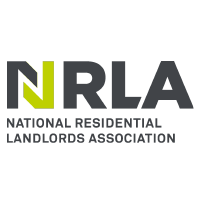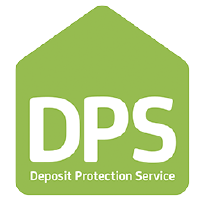
Investing in commercial property – is now a good time to start?
Tom Entwistle talks about the prospects of investing in commercial property.
Commercial property is an alternative asset class to residential and depending on your own circumstances, it may be a sensible way of diversifying your overall investment portfolio risk.
By the way you don’t need to attend expensive “guru” courses to have them hold your hand – there’s lots of information and advice available if you only ask and read-up. Basically, it’s just a lot of common sense, doing rigorous research and being cautious – not taking too much risk.
Many landlords have been leaving the residential private rented sector and don’t realise the potential investment value there is in the commercial property sector. This is a different ball game, so a slightly different skill set is required, but it’s not a big step by any means.
You need good market knowledge, a basic understanding of contract law and the Landlord & Tenant Act 1954. There are few books available on UK investing in commercial property – the best ones tend to be by American authors so they need a bit of interpretation because they use some different technical terms.
Business to business
As a landlord of a commercial property, you are renting out to another business not a private residential tenant, so often, providing the business is well established, you get a reliable source of income in the form of rents. If you are renting to start-ups, make sure you get personal guarantees in place, especially if it’s a limited company tenant.
But when you are new to this, purchasing a commercial property can be a bit daunting as you will find it hard to know if you are buying at the right price. Often there are no quoted prices available on comparable properties and it is something of a closed shop as far as commercial property agents and their detailed knowledge is concerned.
People make the most money from commercial property whey they buy: distressed sales, mis-information, poor marketing and vendors not understanding when they have. The lease is the starting point for a tenanted investment. A lot of detective work is required.
Values have been hit!
Commercial property values have taken a hit over the past few years due to an economic slowdown, higher interest rates and Covid. As a consequence, many tenanted buildings will be over-rented at current rates. Those owners with greater exposure to offices and retail property have borne the brunt of market scepticism with values falling sharply, some rents are down 50% or so from their peak..
This creates opportunities as eventually the market cycle will change and inevitably values will rise again, but in the meantime, yields have been pushed up and there are some bargains to be had. The question is, which properties will be in demand in the future. Will the economy with this new Labour government turn and grow, that’s a big question at this early stage?
Risk
There are many advantages to investing in commercial property, but there are also some big risks. Tenant demand is the key to this and with tenant demand goes location: the famous quote, “location, location, location”, its originator lost through time, is as true today as when it was first spoken, most likely in 1920s America.
It’s vital for a shop to have good footfall, less important for an office or industrial building, but nevertheless still important. Location also determines the property designation: primary, secondary or tertiary.
Here we are dealing primarily with investing for small-scale landlords, those with funds to invest most likely up to £500k, £1m tops. This would normally put you in the secondary property category.
The secondary market tends to be smaller shops, offices or industrial units housing smaller firms as tenants. Primary property would be city centre buildings, shopping centres or retail parks running to £millions of an investment, whereas the tertiary market tends to not only be in less desirable areas they may be older run-down or converted buildings of one kind or other.
Tenant risk
Unless you have vast resources behind you, chances are when you are starting off you are going to be dealing with smaller tenants: family businesses, or what the Americans call “Mom and Pop” businesses. These businesses, especially if they are new, are the least financially secure – your rent payments are at risk.
To combat this you need to do your due diligence on tenants very rigorously, whether they are existing tenants when you buy or you are taking on new business tenants.
Good advice is hard to come by on this topic unless you are willing to get tied up to some ridiculously expensive scheme that’s going to take a big chunk of your money before you even get started. That’s not necessary. Here’s some free sensible advice in video format.
Personally, I would prefer a sole trader to a newly formed limited company. Sole traders put their personal assets at risk, so they have something to lose. If you must take on a newly formed limited company tenant make sure you get personal guarantees.
The tenant lease that you find in place, or the one you sign them up to is crucial. Make sure you understand all the clauses and use a good property solicitor if you are drawing up a new one. You can share the costs between you and the new tenant.
Returns
When you rent out a commercial property you are looking for a return of two kinds: income and capital growth. Generally, income (yield) from a secondary commercial unit, say a shop or office with a reasonable prospect of letting and staying occupied would be around 10 percent, which is higher than what you would expect from a residential letting.
Yield reflects risk, so the higher the risk, the higher the yield you can expect to get as a reward or incentive for taking that risk. It is possible to increase that yield on an investment by buying cheap (say a run-down unit needing refurbishment) maybe up to 20 percent. In that case it would take you just five years to get your original investment back as opposed to 10 with a 10 percent yield. After that time, you would expect the property’s value to have increased, as would the market rent, at least keeping pace with inflation.
The advantages of investing in a commercial property:
- Investing in bricks and mortar potentially offers you capital growth with a regular monthly or quarterly income, and greater security than investing in stocks and shares. The rental yields are usually much better than residential
- You can let on legally secure long-term leases (Landlord & Tenant Act 1954), anything from 3 to 20 years, which providing you have let to a good solid tenant, will give you a reliable income stream. This can safely protect you into the future.
- Management from a landlord’s point of view is a much lighter touch than what’s needed with buy-to-lets as there are far fewer tenant changes and with a full-repairing and insuring (FRI) lease, the tenant is responsible for everything.
- Commercial tenants avoid some of the punitive tax changes and tighter regulations now affecting UK residential (buy-to-let) investments.
- There are far less statutory regulations to protect your business tenants, so if a business tenant fails to pay rent you have the protection of a commercial contract: you can hire commercial bailiffs to recover rent within weeks or evict the tenant (forfeit the property).
The disadvantages of investing in a commercial property:
- Commercial units usually require a larger investment than a buy-to-lets and there is no buy-to-let mortgage available, so you will need a commercial loan. Not only do commercial loans come with a higher price tag (interest) they are harder to get if you don’t have a demonstrable successful track record.
- Commercial property represents a greater risk than a residential one. That’s because if the property comes vacant residential units let almost straight away, whereas it can take months or even years to find a suitable replacement commercial tenant.
- If the unit becomes vacant the commercial charges are a killer: all the costs now fall back on the landlords that the tenant was paying before, full business rates become payable after 3 months, insurance often doubles in price because of the vacancy, and you may need to pay for some kind of security to protect your investment. Utility bills also fall back on the landlord.
- With the new MEES regulations landlords are obliged to bring their buildings up to the latest specifications on energy efficiency. These buildings are often far more complex, some are older and therefore expensive to upgrade as required. If they are already tenanted the work involved is likely to be difficult to resolve.
Valuing the property
Valuing a commercial property is a specialist field of activity and unless you are an experienced investor, even if you are, you should enlist the services of a property professional, a property agent who is usually a qualified chartered surveyor with local knowledge.
Comparing the property with others in the vicinity is perhaps the most common valuation method – the comparables method. You can compare the rents and yields currently being achieved on similar properties in similar locations. This method involves a fair amount of insider information beyond simple Land Registry data, that’s why you need to liaise with local commercial property agents who will have the local knowledge – passing rents and yields – based on the key value factors – the state and age of the property, size measurements, interior layouts and access points, local tenant demand etc. The difficulty with the comparables method is lack of recent sales or rent reviews and the existence of special purchases or sales, over or under the market prices.
The investment method is used where there is an income stream to value the investment yield, but this means the property is tenanted or an accurate assessment of the virtually certain achievable rent can be made. This can include a mixed use case of commercial, residential, retail, industrial etc. Rental values (market rent) and a market-based yield must be assessed, the yield being the annual return on investment, expressed as a percentage of the capital value.
Valuers will usually apply rental growth into such a calculation based on a reasonable number of years (lease length) and taking inflation predictions into account. The method uses a discounted cash flow (DCF) calculation based on an assumed discounted rate and various other value assumptions. The rate of return used in a DCF calculation will reflect the current risk-free rate (what could be achieved in a 10 year treasury bond for example) plus a property risk premium.
All valuation models of this type rely on having sufficient reliable data – garbage in, garbage out – and of course most successful investors use these valuations as a base to which they add their “gut instinct” about a particular purchase.
At the end of the day, the quality of the tenant is the key to a commercial property’s value.
Is now a good time to invest in commercial property?
When a property is cheap it’s usually for a reason. In the case of commercial it’s because no firm wants that retail shop, office or industrial unit that’s on the market, it’s in the wrong place, or in need of a major refurb and therefore investors don’t want it tenanted or vacant.
Generally, the value of a commercial building depends on the bricks and mortar but more importantly on the quality of the tenant and the length of lease to maturity. This is known as covenant strength, the future security of that all-important income stream.
Where are we in the cycle, are there signs of an economic recovery and what are the letting prospects for the property investment – commercial property values are very much tied to the fortunes of the national and local economies.
Have you done your thorough due diligence observing footfall over an extended period and assessing the quality of the location. Have you structurally surveyed the building for hidden issues that could cost a small fortune? Have you researched the local plan for changes such as new roads, diversions, new developments in the locality. Remember, if the price is low, there is usually a reason for that.
Price is what you pay, value is what you get as Warren Buffet famously said, so take your time when assessing value before making a reasonable offer. Don’t get carried away and always be prepared to miss a deal by offering a lower price. Once you have assessed the value to you, don’t pay more unless there’s a special reason – remember, you make your profit on a deal when you buy, not when you sell.
Tax strategies
There are various kinds of tax advantages when investing in commercial properties – see the TaxCafe guide below. One particular advantage is, it can be tax-efficient to buy commercial property through a pension, where the pension fund owns the property investment. This is particularly useful if you are thinking about passing on your wealth to the next generation as your SIPP or SASS is in effect a trust fund which can be passed over to family inheritance tax (IHT) free. Seek professional advice.
Risk reduction
How can you reduce your risk when investing in a commercial?
For a start you can do your thorough research and valuation as stated above. Secondly you can reduce your initial outlay as much as possible by buying something that requires refurb work. Not everyone wants to do that, so the market for the property is reduced and therefore the price will be less. If you are handy and you can do some of the refurbishment and/or conversion work yourself, so much the better – you can add a tremendous amount of value that way. But remember, you can’t reclaim tax on work you do yourself.
Ask yourself if it’s the right time to buy by assessing the values of comparable, perhaps speaking to local agents to get their views – they are dealing in the market every day if they see there’s a prospect of a deal with you, they are likely to be very helpful. Find a good mortgage broker to search the market for the best commercial deals for you.
Next you can look at buying with an eye to development, perhaps to split the whole into smaller units, shops with offices combined. You then have several tenants providing you with income, so your risk is reduced if one fails.
Finally, think about mixed use, commercial and residential combined. You can always guarantee to get a residential tenant, perhaps in flats above shops and offices. There are also tax and planning incentives for commercial to residential conversions through VAT concessions and permitted development rights. If the shops or offices won’t let for a while the residential uppers could cover the costs of vacancies reducing your risk considerably.
Good luck in your endeavours investing in commercial property. If you get it right, it’s more lucrative than buy-to-let and a lot less hassle.
Tax Café, The Benefits of Commercial Property, The Tax Benefits of Commercial Property
Original Post from landlordzone.co.uk


